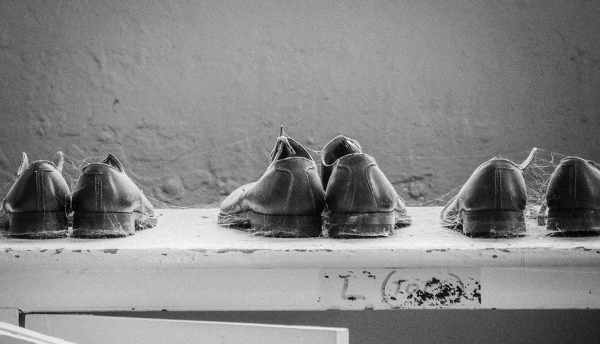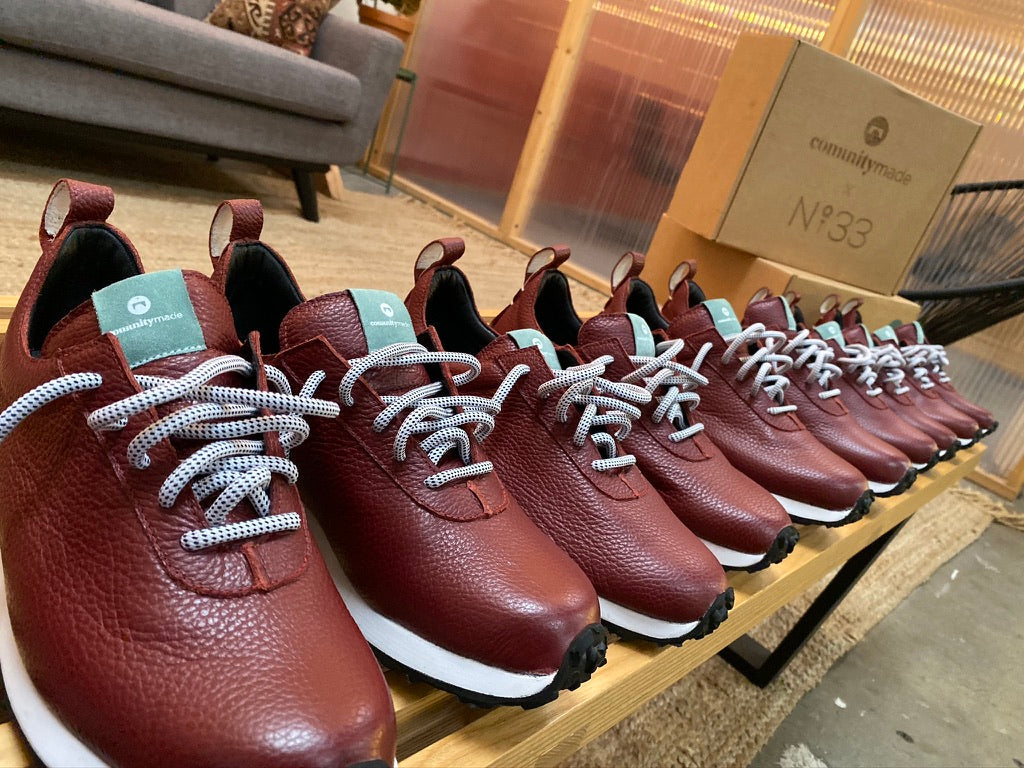
Footwear has been an expression of status for almost as long as we’ve been on this planet. Ages ago, when some fashion-forward ancestor of ours fastened a strip of leather around her foot, we can bet that her BFF asked her, “Were those on sale? Where did you get them?”
The Ancient History of Shoes
Archeologists theorize that what we know today as shoes originated 40,000 years ago in the Middle Paleolithic period. This was probably about the same time someone first wrote a diet book. In any case, our best evidence suggests wearing shoes became widespread a few thousand years later. The earliest foot covering looked more like a bag made of animal hide than a shoe. And it’s safe to say these early protective shoes were more common in environments with rough terrain and cold temperatures that made them a necessity.

From a Practical Need to a Status Symbol
A status symbol is commonly defined as a visible sign of social position and or economic hierarchy. Determining precisely when shoes went from being a vital necessity to an expression of status is a little more difficult to pin down. However, human nature gives us a few clues. From our earliest stages of development, we know that outward displays of status and or superiority has been essential to humans.
Even in the animal world, an expression of status is vital. Birds don’t wear shoes, but if they could, can you imagine the vivid colors they would display to attract a mate? This brings us to the next point – men are just as concerned as anyone else with expressions of status. And yes, this is especially true of shoes.
Men’s shoes may not have the breathtaking variety of styles that is true of women’s shoes, but status is just as important, albeit less creative. Here again, it’s true – girls have more fun.
Cleopatra Had Shoes to Die For
Perhaps, the most famous female of all time, Cleopatra who ruled Egypt had changed the course of history. Roman icons like Caesar and Mark Antony laid themselves at her feet. Could it have been because of her shoes? Is there any doubt she, Cleopatra, who commanded the attention of the world’s most powerful leaders, would have worn the most exquisite, handmade flats with straps?

Leather Shoes From the
Middle Ages to the 15th Century
Although there is scholarly debate about exactly when the middle ages began and what is known as the Renaissance period, there is complete agreement that both men and women wore the very finest shoe fashion they could afford as an expression of status. For centuries shoes had undergone improvements in all areas of style, construction, and materials. During the 15th century, the race to wear the best, most exotic, and most rare examples of shoes became an irresistible passion of the upper class. Archeological evidence shows us even those outside the upper class adorned themselves with a lot more than just basic foot coverings.
Since everything was handmade back then, artisans had the capacity to create whatever they wanted for whomever they so chose. Back then, the social status would have been defined by very clear lines, and it might have been a little risky to wear a pair of shoes that were above your station. Unfortunately, there’s nothing new about “getting jumped” for a pair of shoes.
Shoes In the Americas
It has long been recognized that most trends start right here on the west coast. Shoes are actually one of the earliest examples of trends originating on our left coast.
Archeologists found shoes in the Fort Rock Cave in the state of Oregon that dates back to roughly 8000 BC. And even though in the world of fashion, what’s old is new again, these sagebrush bark sandals may be the exception. Although, I could swear I saw someone wearing them in a bar named “Keep Portland Weird.”
Early indigenous people of the Americas wore moccasins; the particular materials and construction methods used would have varied greatly depending on climate and natural terrain. In the Great Plains, footwear was made of the most abundant natural material, bison hide. In what is today known as Alaska, mukluks were made from seal skin, and whalebone needles were used to sew them together.
Regardless of where or when shoes of all sorts were often adorned with beads, fringes, and other decorations to display a sense of pride in craftsmanship as well as social position.
Colonial Cobblers,
Cordwainers, and Shoemakers
Sturdy and long-lasting shoes were essential to the early settlers. Thick, double-soled, and fully welted shoes were constructed of tough leather both inside and out. There wasn’t much of a need for adornment, and yet, certain aspects of construction separated those who occupied elevated status.

20th Century Abundance
If we rush forward to the early 1900s, we can see that some elements of industrialization made it possible for many more people to have shoes than ever before.
Here again, the different qualities of shoe materials and construction were ample enough to signify differences in status. Adornment of any kind made an even stronger statement. The need for hundreds of thousands of shoes during both World Wars accelerated the industrialization of shoe manufacturing.
The form of shoes continued to advance, and during the 1960s and 1970s, cork soled shoes, leather clogs, platform shoes, and flip-flops became popular. Some say these shoes were a high point in shoe fashion, and some say things like cork-soled sandals were a sure-fire method of birth control.

The Discerning 21st Century
Today, just about anything we can imagine in footwear is available to us in one form or another. And it is also true that handmade quality is a growing focus in certain parts of the United States. Right here in California, there are well-established craftspeople working with designers to provide the finest handmade shoes in whatever style and materials you prefer. COMUNITYmade is one such group of craftspeople and designers who will work with you to envision and bring to life the perfect pair of shoes.


